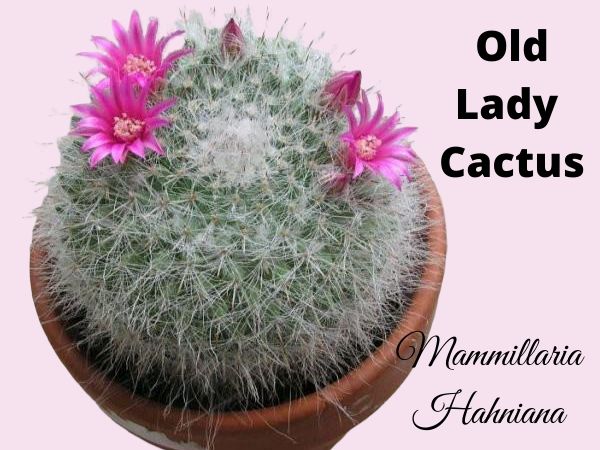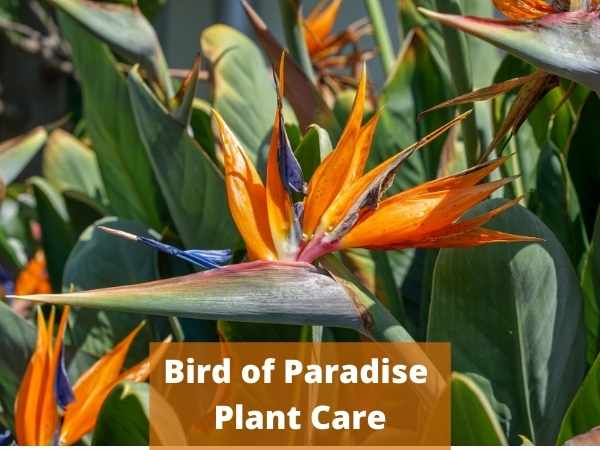Geraniums are among the most beloved plants for gardeners around the world, especially for container gardening. Their colorful blossoms and fragrant, sometimes textured, foliage make them a must-have for patios, balconies, and windowsills.
Growing Geraniums In Pots
When people talk about “geraniums,” they often refer to Pelargoniums, a group of vibrant, sun-loving plants different from the hardy true Geraniums (also called cranesbills).
Pelargoniums are ideal for growing in pots because they thrive in confined spaces, bloom profusely for months, and can be easily moved indoors when temperatures drop. Choosing the Right Geraniums
Choosing the right type of geranium is essential for success. Here are the four main types suited for pots:
Zonal Geraniums (Pelargonium × hortorum)
Classic, upright plants with round, sometimes variegated leaves and large clusters of flowers. Perfect for traditional container displays.
Ivy-Leaved Geraniums (Pelargonium peltatum)
Trailing habit makes them ideal for hanging baskets and window boxes. They produce masses of star-shaped flowers.
Regal or Martha Washington Geraniums (Pelargonium × domesticum)
Large, ruffled blooms in rich colors. These prefer cooler temperatures and partial shade.
Scented-Leaved Geraniums (Various Pelargonium species and hybrids)
Grown primarily for their aromatic leaves (rose, lemon, mint scents). Flowers are usually smaller but still attractive.
Tips for selection:
- Choose zonal types for sunny, hot spots.
- Pick ivy-leaved for cascading effects in containers.
- Try regal types for cooler patios or partly shaded areas.
- Grow scented types near seating areas to enjoy their fragrance.
Selecting the Best Pot
Choosing the right container is crucial if you want to grow healthy geraniums. I always consider:
Size:
A pot should be at least 8–12 inches (20–30 cm) deep and wide for one plant. For larger displays, bigger pots allow more roots and blooms.
Material:
- Clay (terracotta): Breathable, helps prevent overwatering, but dries out faster.
- Plastic: Retains moisture better but needs careful watering to avoid root rot.
- Ceramic (glazed): Attractive but heavier and less breathable.
Drainage:
Pots must have drainage holes. Without proper drainage, roots will rot quickly.
Use a saucer under the pot to catch excess water, but make sure the pot does not sit constantly in standing water.
Ideal Soil and Potting Mix
Choosing the right soil for your potted geraniums is one of the most important steps to ensuring healthy plants and abundant blooms.
Geraniums are particularly sensitive to poor drainage, their roots can easily rot if left sitting in overly moist conditions.
Characteristics of an Ideal Soil Mix
Lightweight and allows easy root expansion. Well-draining, hence preventing soggy conditions that lead to rot.
Moderately fertile and provides nutrients, but does not retain excessive moisture. Slightly acidic to neutral pH, the ideal pH range is 6.0–7.0.
Avoid:
Heavy clay soils are too dense and water-retentive. Straight garden soil tends to compact in containers and lacks drainage.
Recommended Soil Options:
High-Quality Commercial Potting Mix: Look for mixes labeled for “container plants” or “indoor/outdoor flowers.”
Amended Mixes: You can enhance commercial potting soil with additional ingredients to improve drainage and aeration.
DIY Potting Mix for Geraniums
Here’s an easy recipe you can make at home:
- 2 parts all-purpose potting soil
- 1 part perlite
- 1 part coarse sand
- ½ part compost (optional)
Mix thoroughly and moisten slightly before use.
Planting Your Geraniums Step-by-Step
Planting geraniums correctly ensures they adapt quickly to their new pot environment and start flourishing.
1. Prepare the Container
Ensure the pot has clean drainage holes. Cover the bottom hole with a piece of broken pottery or mesh screen to prevent soil loss while allowing water to drain freely.
2. Fill with Soil
Fill about two-thirds of the pot with your prepared soil mix. Tap the pot gently to settle the soil without compacting it too tightly.
3. Prepare the Plant
Remove the geranium from its nursery pot. Gently loosen any circling or compacted roots with your fingers.
4. Position the Plant
Place the geranium in the pot so the top of the root ball is about 1 inch below the rim of the pot.
Backfill around the root ball with soil, firming lightly as you go to eliminate air pockets.
5. Water Thoroughly
Water the plant slowly and deeply until you see water exiting from the bottom. This helps settle the soil around the roots and initiates strong establishment.
6. Planting Cuttings
If starting from cuttings, allow the stem cuttings to form roots in water or moist soil before transferring to a pot. Always use sterile tools to take cuttings to prevent disease.
If using a large container with multiple geraniums, space them 8–12 inches apart to allow airflow and reduce disease risks.
Light and Temperature Requirements
Geraniums are native to South Africa’s sunny, warm climate, so they love abundant light and moderate warmth.
Sunlight Needs
Ideal: 6–8 hours of direct sunlight per day. In regions with intense afternoon sun (especially the U.S. South and Southwest), provide morning sun and light afternoon shade to protect leaves from scorching.
Insufficient light causes:
- Leggy, weak stems.
- Poor blooming.
- Pale or yellowing foliage.
Temperature Requirements
The optimal daytime temperatures are between 65–75°F (18–24°C). While nighttime temperatures should stay above 50°F (10°C).
Geraniums are not frost-tolerant — exposure to temperatures below 40°F (4°C) can damage or kill them.
Indoor Growing Tips:
- Place pots near the brightest window (preferably south-facing).
- Rotate pots weekly to ensure even light exposure and prevent lopsided growth.
If natural light is insufficient (especially in winter), supplement with full-spectrum grow lights for 12–14 hours daily.
Watering and Fertilizing
Proper watering and feeding are crucial to getting lush, flowering geraniums.
Water deeply but infrequently. Allow the top 1 inch (2.5 cm) of soil to dry between waterings.
Avoid shallow watering, which encourages weak surface roots. In hot weather, expect to water every 2–3 days; in cooler or shaded conditions, reduce watering frequency.
Signs You’re Overwatering:
- Yellowing leaves, particularly lower leaves.
- Wilting despite wet soil.
- Mushy stems and foul smell from the soil.
Signs You’re Underwatering:
- Wilting with dry soil.
- Crisp or brown leaf edges.
Fertilizing Schedule
Start feeding 4–6 weeks after planting if no slow-release fertilizer was added. Use a balanced water-soluble fertilizer (e.g., 10-10-10) or a bloom booster with a higher phosphorus content (e.g., 10-20-10).
Fertilize every 2–4 weeks during active growth (spring through early fall). Reduce or stop fertilizing indoor geraniums if they go semi-dormant.
Pruning and Deadheading
Maintaining the shape and energy of your geraniums requires regular pruning and deadheading.
Remove faded or dead flower clusters as soon as they fade. Cut or snap the stem off just above a leaf node (where a leaf joins the stem).
Deadheading redirects energy into producing more flowers instead of seed development.
Pruning for Bushiness:
Early Season:
Pinch back growing tips when the plant is young to encourage side branches and a fuller shape.
Mid-Season:
Lightly prune or shear plants by about one-third to stimulate fresh growth and maintain a neat appearance.
Fall:
Before overwintering, cut plants back by half their size to reduce energy demand and prevent legginess indoors.
Always use sharp, clean scissors or pruning shears to prevent disease transmission.
Pests And Diseases
Even with excellent care, geraniums can face a few challenges.
Aphids: Soft-bodied insects found on tender new shoots. Treat with insecticidal soap or a strong water spray.
Whiteflies: Tiny, white, moth-like insects that fly when the plant is disturbed. Yellow sticky traps help control them.
Spider Mites: Microscopic pests causing stippled or bronze leaves. Control with horticultural oil or miticides.
Root Rot: Caused by waterlogged soil; prevent with proper drainage.
Botrytis Blight: Gray mold on flowers or leaves during humid conditions. Improve air circulation and remove affected parts.
Rust: Look for small, round, orange spots on the underside of leaves. Remove infected leaves promptly and use a fungicide if necessary.
Creative Ideas for Potted Geranium Displays
Geraniums offer incredible versatility for decorative container gardening. You can create stunning effects by combining them with other plants or using creative container designs.
Geraniums pair well with plants that have similar light and water needs. The best Geranium companion plants include:
Trailing Plants:
- Lobelia: Cascading blue flowers contrast beautifully with red or pink geraniums.
- Bacopa: White or pink, small blooms add a frothy texture.
- Calibrachoa (“Million Bells”): Mini-petunia lookalikes offer colorful trailing blooms.
Foliage Plants:
- Dusty Miller: Silver foliage complements bright flowers.
- Sweet Potato Vine: Bold, colorful leaves trail gracefully over pot edges.
Fragrance and Pollinator Appeal:
- Sweet Alyssum: Tiny, honey-scented blooms attract beneficial insects.
Creative Container Ideas:
Hanging Baskets: Use ivy-leaf geraniums to create lush cascades of flowers from baskets hung on patios or porches.
Color Themes:
- Monochromatic: Plant all white, all pink, or all red geraniums for elegant uniformity.
- Hot Colors: Mix fiery reds, oranges, and yellows for a bold, tropical feel.
- Pastel Mix: Blend soft pinks, lavenders, and whites for a romantic cottage garden look.
Statement Containers:
Group several different-sized pots together for a layered, natural look. Add taller plants in the center and trailing varieties at the edges.
Don’t be afraid to use unconventional containers like vintage buckets, wooden crates, or colorful ceramic pots; just make sure they have adequate drainage.
Final Thoughts
Growing geraniums in pots has been a satisfying and colorful way to brighten up many of my spaces.
Try growing some too, and you will enjoy the results. If you are interested in growing more awesome flowers and houseplants, subscribe to my newsletter. Also, save the pin below; it helps this blog grow. Thanks!








